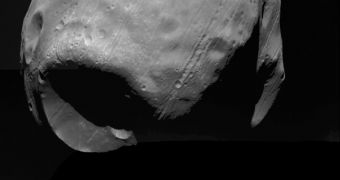After nearly two months of observations on the trajectory of asteroid 2007 WD5, astronomers finally succeeded in calculating the exact trajectory of the object which only a few days ago had a chance of 1 in 28 to hit the Red Planet. Asteroid 2007 WD5, discovered on November 30 last year, is now expected to pass through the vicinity of Mars at a distance of about 30,000 kilometers.
Incredibly, the object estimated to have a diameter of about 50 meters was detected during a scan of the night sky made by the University of Arizona five days after it passed through the close proximity of the Earth. The so-called Catalina Sky Survey revealed that the asteroid 2007 WD5 was traveling through space at a speed of about 47,000 kilometers per second, and originally estimated that its trajectory gave it an odd of 1 in 350 that it would hit the planet Mars on January 30.
Further observations made in the month of December greatly increased the chances to 1 in 75 and later to 1 in 28. NASA rushed to prepare all its available spacecrafts in the orbit of Mars to view the collision in case of a potential impact. However, yesterday, the Near Earth Object program announced that 2007 WD5 will most likely miss the Red Planet, as a result of detailed observations made by astronomers at the Calar Alto Observatory in Spain.
If it was to hit Mars, the asteroid 2007 WD5 would have probably released an energy equivalent to 3 megatonnes of TNT, which, for a planet the size of Mars, would be enough to create a crater very similar to the Meteor Crater in the Unites States.
According to Steve Chesley from NASA's Jet Propulsion Laboratory, the probability that the asteroid would hit the planet will slowly fall, in case the trajectory of the object remains stable, thus there are still some uncertainties regarding the exact path the asteroid will follow. Studies regarding the solar system formation and the later interactions between the planets and smaller bodies, such as comets and asteroids, approximate that similar impacts occur on Mars once every thousand years or more.

 14 DAY TRIAL //
14 DAY TRIAL //